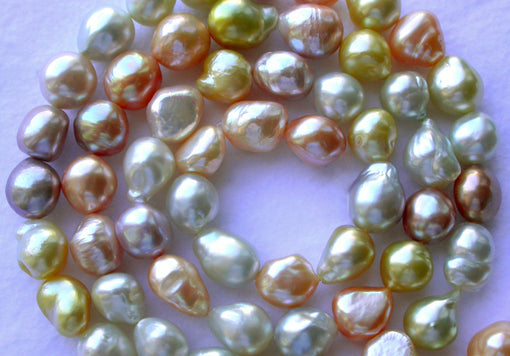The "real" pearls, i.e. those that we buy in jewelry and that you find on our online shop, are all cultured pearls.
These differ from imitation pearls – such as shell and Mallorca pearls – and natural pearls.
Imitation pearls are pearls of much lower commercial value than cultured ones and are artificially made through the use of glass, mother-of-pearl, .. We will soon write another article on this type of pearl as it is a very vast topic.
Instead, natural pearls are pearls that are found in nature without human intervention. These are very hard to find. Historically they are among the first pearls to be marketed but over time cultured pearls have increasingly dominated the market. they are relatively easier to find and the prices are lower.
But to fully understand what a cultured pearl is and how it can be defined as an evolution of the natural pearl, it is necessary to understand how a pearl is generated.
Pearls are generated from oysters, which look like common giant shells. When a foreign body enters an oyster, the latter tends to isolate it in order to protect itself by coating it with mother-of-pearl. The spherical pearls that we all have in mind are nothing more than the result of the coating of a small sphere (technically called nucleus) by the oyster itself.
Once we understand the process of generating a pearl, we are ready to understand the difference between a natural and a cultured pearl.
In a natural pearl, the nucleus enters the oyster due to natural conditions, not dependent on man. It is a very small nucleus that is almost invisible under a microscope. Instead, in a cultured pearl the nucleus is inserted by man. Understand then how this human intervention has allowed the commercialization of pearls on a world level with a very low entry price for the less rare pearls.
With the passage of time there have been further refinements in the cultivations which have allowed to refine the cultivation technique. Here we mention only a few such as: the selection of more prolific oysters, the creation of nuclei capable of better refracting light and so on.
This topic will be analyzed later – stay tuned!
